Stowe Gardens
A Walk in Wonderland...
Visiting Stowe Gardens is like walking into another world. As you pass through Bell Gate the world becomes one of picture-perfect vistas. Paths wind through woodland and meander along lakesides where you can watch the wildlife on the water, and pass monuments that all have meaning. These stunning early eighteenth-century gardens have been surprising visitors for over three hundred years.
Stowe Gardens are designed to impress. If you arrive from the Buckingham direction, you pass the Buckingham Lodges and then drive for a mile along an arrow-straight road before turning into the Stowe Gardens entrance. You then continue up to the parking area with a fantastic view of the Corinthian Arch. Walking up to the arch isn't a vain endeavour either, as it offers fabulous views towards Stowe House.
And here’s another quick tip for you. As you go down to the Bell Gate entrance of the gardens, look over to your right and see if you can spot Stowe Castle. It’s not a real castle, just a 1700’s farm dressed up to look like one. Most people miss it, including us, as I only saw it on my last visit!
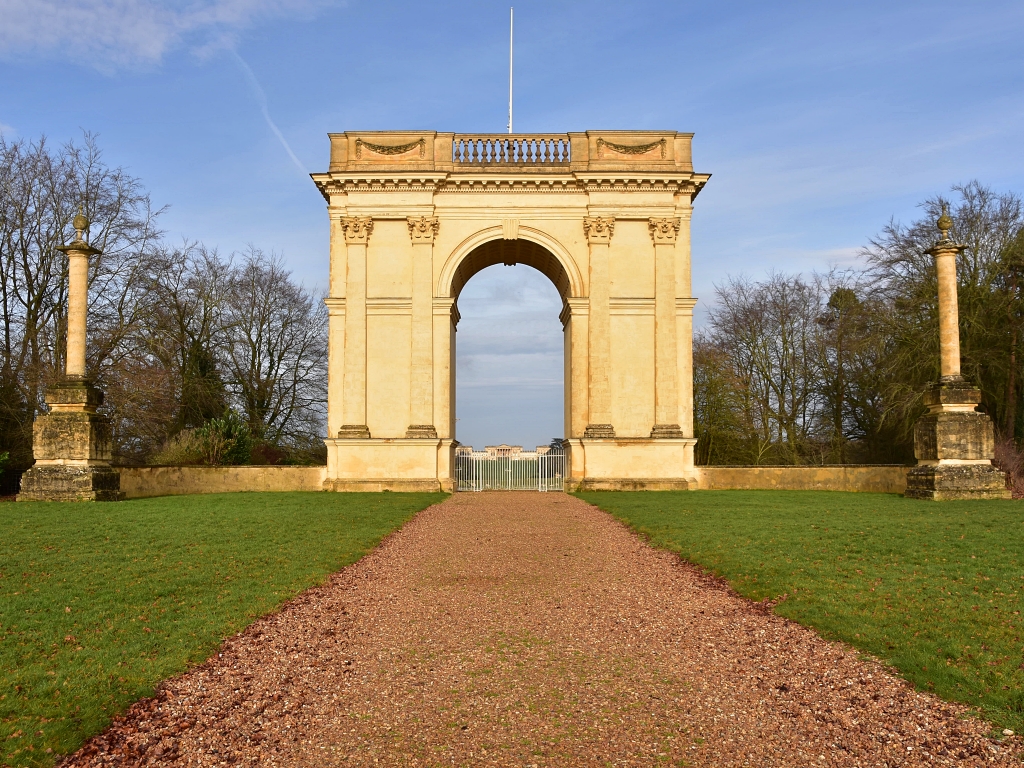 The Corinthian Arch © essentially-england.com
The Corinthian Arch © essentially-england.comThe gardens are open for everyone to enjoy, whether you’re wanting a peaceful stroll, stimulating jog, a picnic, or to take the dog for a walk. There is something for everyone here, except colourful flower beds. Stowe is a landscape garden. You’ll get spring bulbs in the woodland areas, but the design of Stowe Gardens is focussed on water, specimen trees, splendid views, and wide-open areas.
It’s a brilliant place for treasure or monument hunters as there are many temples, statues, and follies in the gardens to find. Get your free map as you enter the gardens and see how many you can tick off. If you want a sneak preview of what to expect, then you can visit our monuments in Stowe Gardens page here.
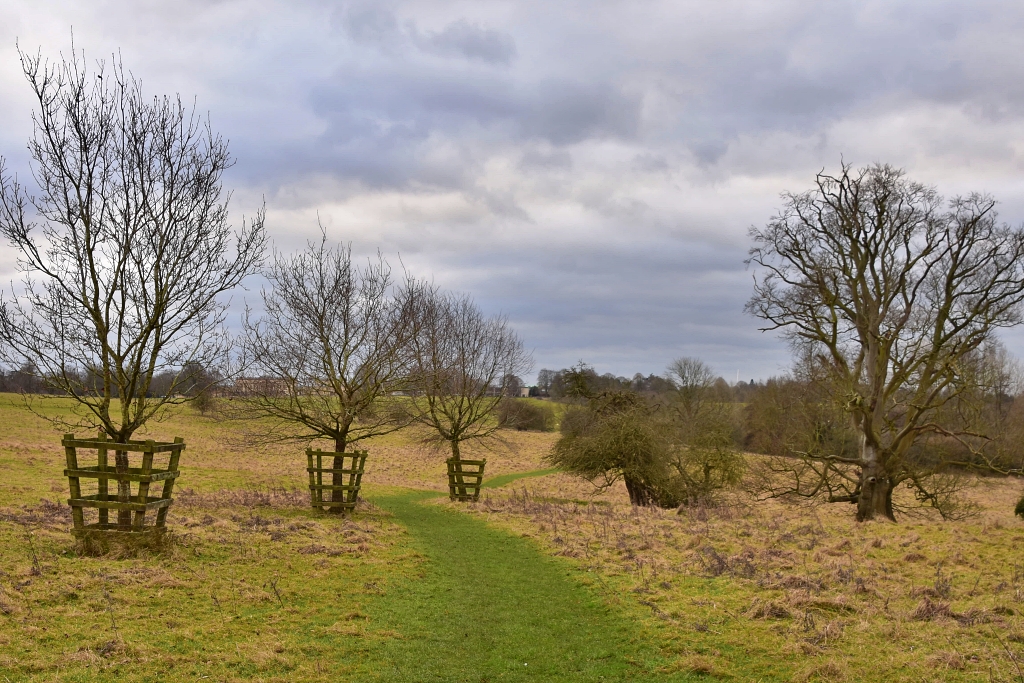 Stowe Parkland Scene © essentially-england.com
Stowe Parkland Scene © essentially-england.comBut Stowe isn’t just about the beautifully cared for landscape gardens. Those make up just a quarter of the land the National Trust looks after. Outside the gardens are close to 750 acres of parkland to explore. We have described a wonderful short walk in the parkland that visits a few more of the infamous Stowe monuments.
For more information on Stowe Gardens and Parkland and opening times and events please visit the National Trust website here.
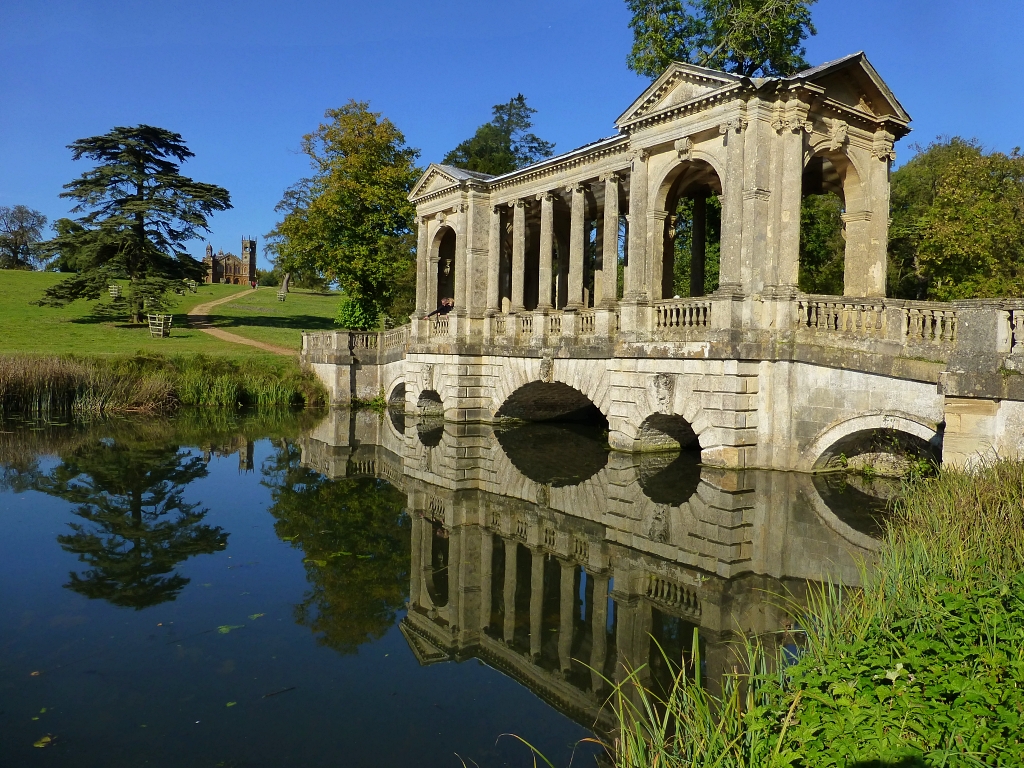 The Palladian Bridge © essentially-england.com
The Palladian Bridge © essentially-england.com
A Brief History of Stowe Gardens
The Domesday Book, commissioned soon after the Norman Conquest, listed a small village of Stowe and a manor and estate. Life at Stowe as we see it today started in the late sixteenth century when John Temple bought Stowe Manor and its estate as a family home. However, it wasn’t until the mid-1600’s, after Sir Richard Temple inherited the estate, that new gardens were designed, and a new mansion built. The new house was not the grand affair we see today.
Stowe House was developed by Sir Richard’s son, also confusingly called Richard, when he became the fifth family owner in 1697. In 1713 Richard became Baron Cobham, and four years later Viscount Cobham. It was around this time that the house was massively extended, and the gardens designed by Charles Bridgman and Sir john Vanbrugh. While creating the gardens, the designers demolished the village of Stowe, which at the time had thirty-two houses and 180 inhabitants. Only St. Mary’s Church survived.
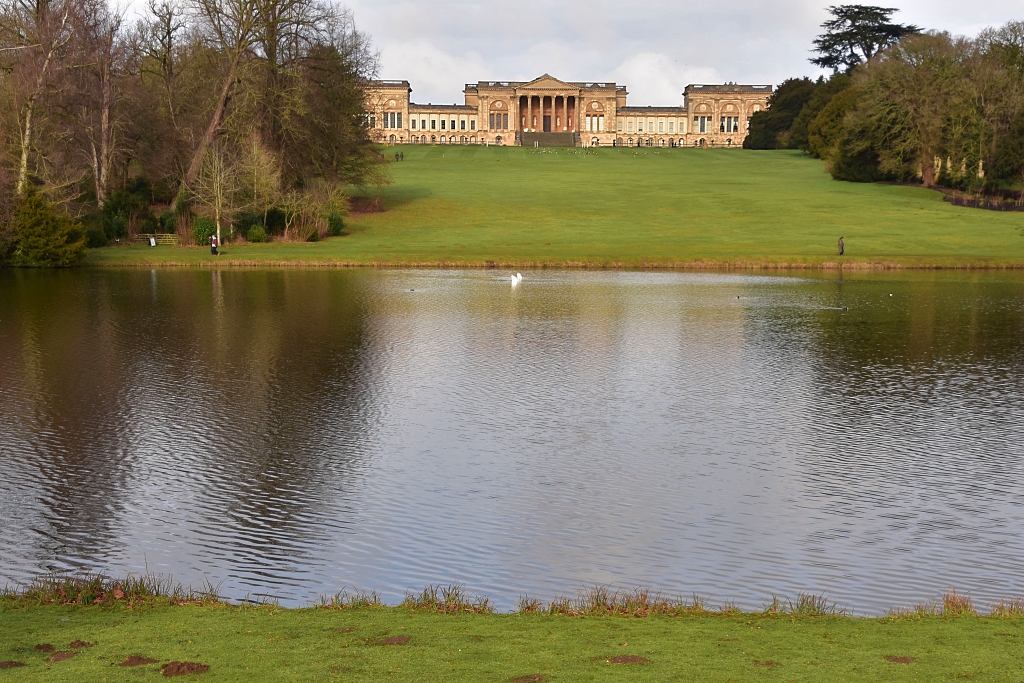 Looking Across Eleven Acre Lake to Stowe House © essentially-england.com
Looking Across Eleven Acre Lake to Stowe House © essentially-england.comThe gardens continued to be developed and extended until Viscount Cobham's death in 1749. Designers such as James Gibbs, William Kent, and Lancelot “Capability” Brown all worked on Stowe Gardens, eventually removing another settlement, the small medieval village of Lamport.
Richard Grenville, Earl Temple - Viscount Cobham's heir - continued to modify the gardens, moving and building new monuments.
Extravagance often led to decline, and Stowe also suffered that fate. While in the ownership of the second Duke of Buckingham and Chandos, Richard Plantagenet Temple-Nugent-Brydges-Chandos-Grenville, repairs to the house and gardens created large debts which grew when the Duke purchased costly new furniture and fittings to sway Queen Victoria and her family during a royal visit in 1845.
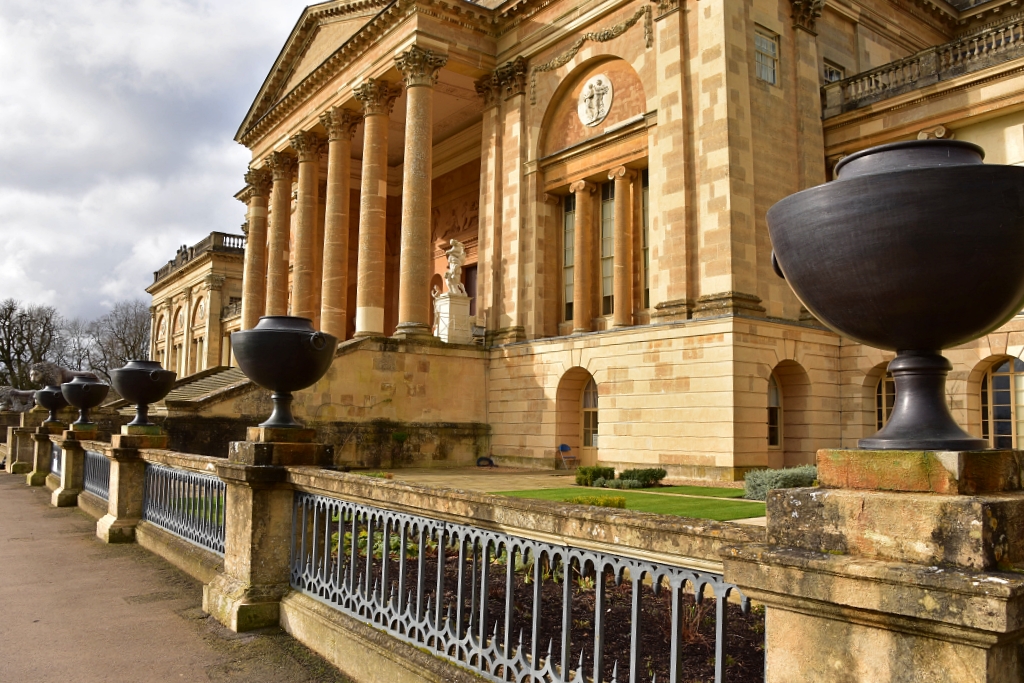 The South Front of Stowe House © essentially-england.com
The South Front of Stowe House © essentially-england.comBy 1850, bailiffs
removed valuable objects from the estate and had them sold at auction to cover the debts.
Despite those setbacks, the third Duke of Buckingham and Chandos was able
to return to Stowe House and start repairs and restoration works during the
1860’s. Within a few years, the Bell Gate reopened to visitors and the splendour
of Stowe was restored.
The revival was short. The third Duke died in 1889 and the estate fell to his daughter, Lady Kinross. The family house was now unnecessary and only used occasionally. Eventually, the Stowe Estate was sold to what is now the Stowe House Preservation Trust which founded Stowe School in 1923. The school realised the potential of the gardens and the care and restoration required, and gifted the gardens and parkland to the National Trust in 1989.
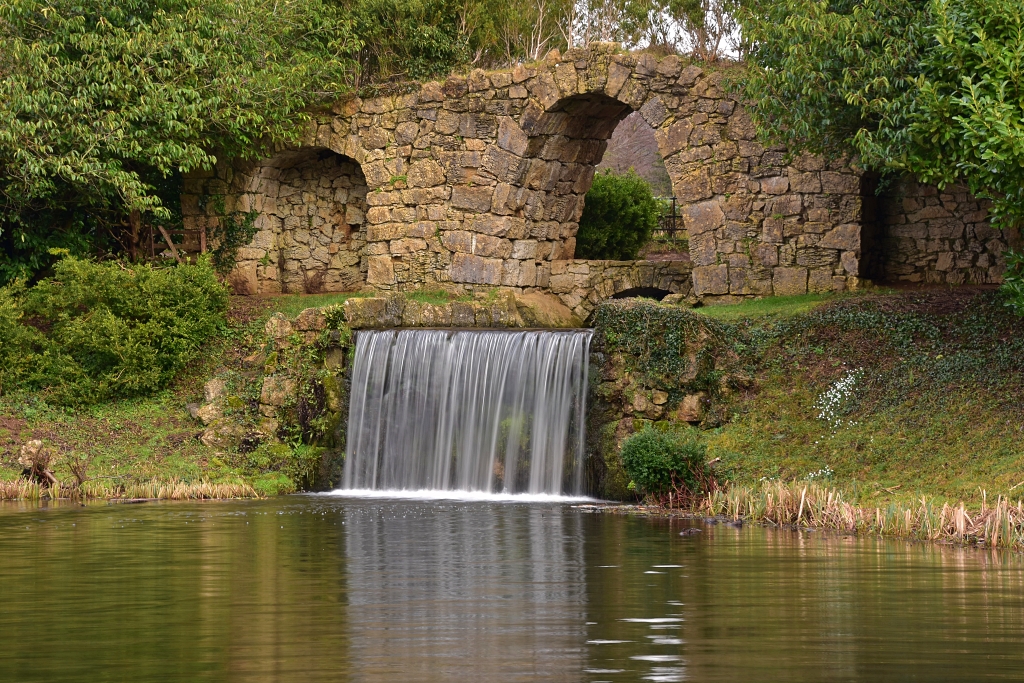 The Cascade and Artificial Ruins © essentially-england.com
The Cascade and Artificial Ruins © essentially-england.com
Visiting Stowe House
Stowe House is not a National Trust property. It is owned by the Stowe House Preservation Trust who run Stowe School. The house is open to the public on certain days of the year when you can explore at your own pace or follow a guided tour. Opening times, entry fees, and events can be found on the Stowe House Preservation Trust website here.
We thoroughly recommend a tour of this luxurious house. The quality of decoration and opulence is up there with the best. Unfortunately, at the time of our visit we were not allowed to take photos, but their website now offers a virtual tour.
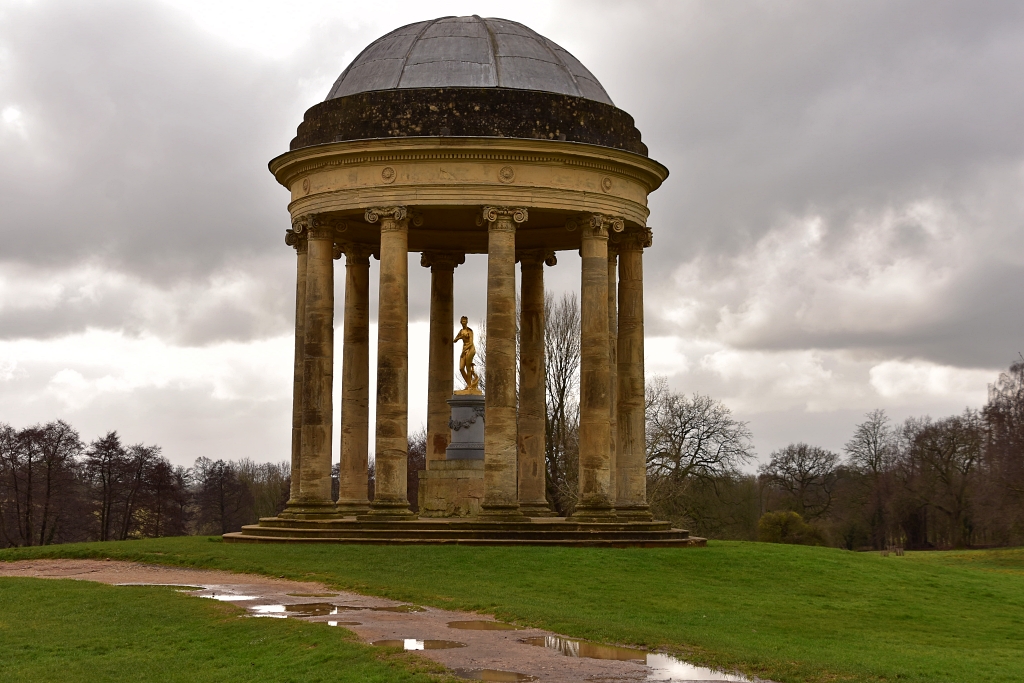 The Rotunda © essentially-england.com
The Rotunda © essentially-england.comWalking in Stowe Gardens
Stowe Gardens are a year-round destination as most of the paths are compacted gravel and generally mud-free. The design offers many different routes depending on time and the distance you're comfortable walking. On my last visit in the first week of February 2024, when I set out on the challenge of photographing all fifty-four points marked on the National Trust garden map, I walked almost eight miles and never used the same path in the same direction more than once. In fact, that walk took me to places I’d never visited before and made my day even more special.
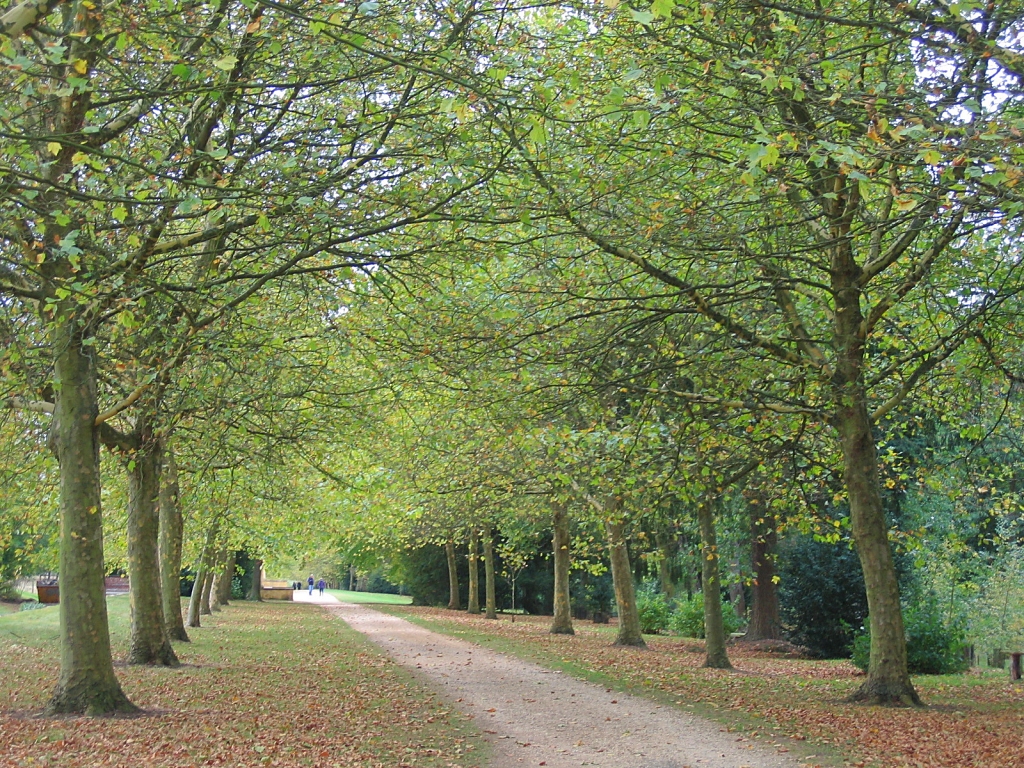 Tree Avenue in Autumn © essentially-england.com
Tree Avenue in Autumn © essentially-england.com
Stowe Garden Walking Routes
The National Trust has devised a number of themed walking routes of varying lengths around the gardens and divided them into “Classics” and “Modern” walks.
The National Trust Classics Walks are described as:
The Path of Vice
“The Paths of Vice and Virtue follow the Greek god, Hercules’ personal struggle. Vice winds through the garden of love (designed believe it or not, by then head gardener, Mr Love!). The temples here tell stories of seductive women, sordid goings-on, and excessive partying.”
The Path of Virtue
“If Vice leaves you all a fluster, you need Virtue. The gardens represent heaven on earth. The monuments promote high values. Don’t miss the Temple of British Worthies, an eclectic ensemble of national heroes. Living a good life isn’t easy, so expect many bridges to cross.”
The Path of Liberty
“Freedom is hard won, so this is the toughest of the three classics. Cobham’s politics are apparent everywhere: the Temple of Concord and Victory celebrates Britain’s triumphant Seven Years’ War while Lord Cobham’s Pillar shows the estate owner as a mighty Roman warrior.”
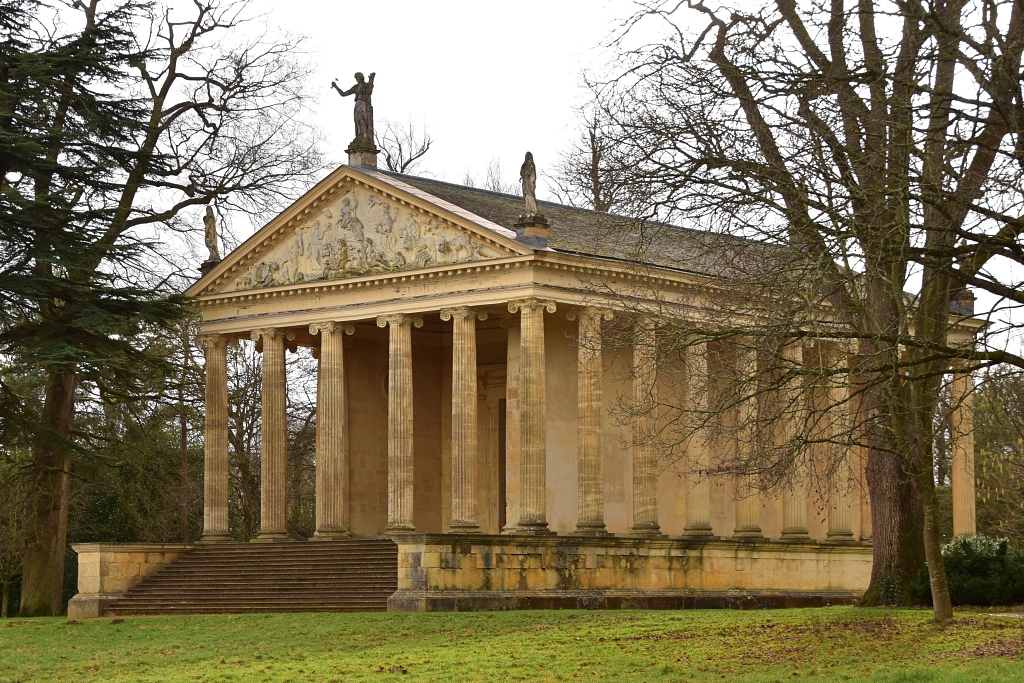 The Temple of Concorde and Victory © essentially-england.com
The Temple of Concorde and Victory © essentially-england.comThe modern walks are:
The Path of the Brave
This 5km circular route visits most of the main sites in the gardens with the intent to inspire and challenge the visitor whilst allowing them to relax and enjoy the peace and beautiful surroundings.
The Path of Contentment
This route is for those visitors that are looking for calm and peace as it explores a quieter part of the gardens. It takes you to the Temple of Friendship, the Chinese House, and down to the gated, secret Lamport Garden via Brown’s Cascade.
The Royal Route
The Royal Route comes in two flavours, classic at 2.5 miles (4 km) long and extended at 4 miles (6 km) long. These routes were created to celebrate the Platinum Jubilee of the late Queen Elizabeth II and explore the royal links in Stowe Gardens.
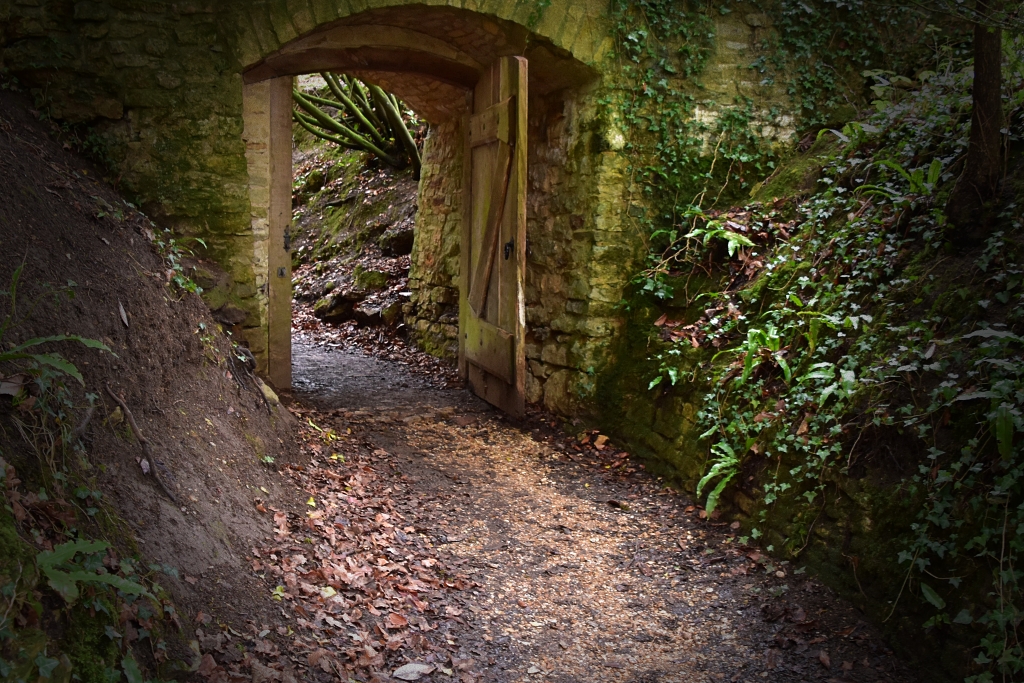 The Secret Gated Entrance to the Lamport Garden © essentially-england.com
The Secret Gated Entrance to the Lamport Garden © essentially-england.comWe’ve been coming to Stowe Gardens for over 20 years and have always found something new. Over the years we’ve seen the new car park area and entrance facilities, and the restoration and re-introduction of the monuments. I was surprised on my last visit by how much I had missed over the years. Or perhaps they’re new areas just open to the public!
One area I really must praise is the secret entrance to the Lamport Garden. Just past the Chinese House, the path goes through a gate and down some steps to Brown’s Cascade. If you go after a wet spell this should be in good flow!
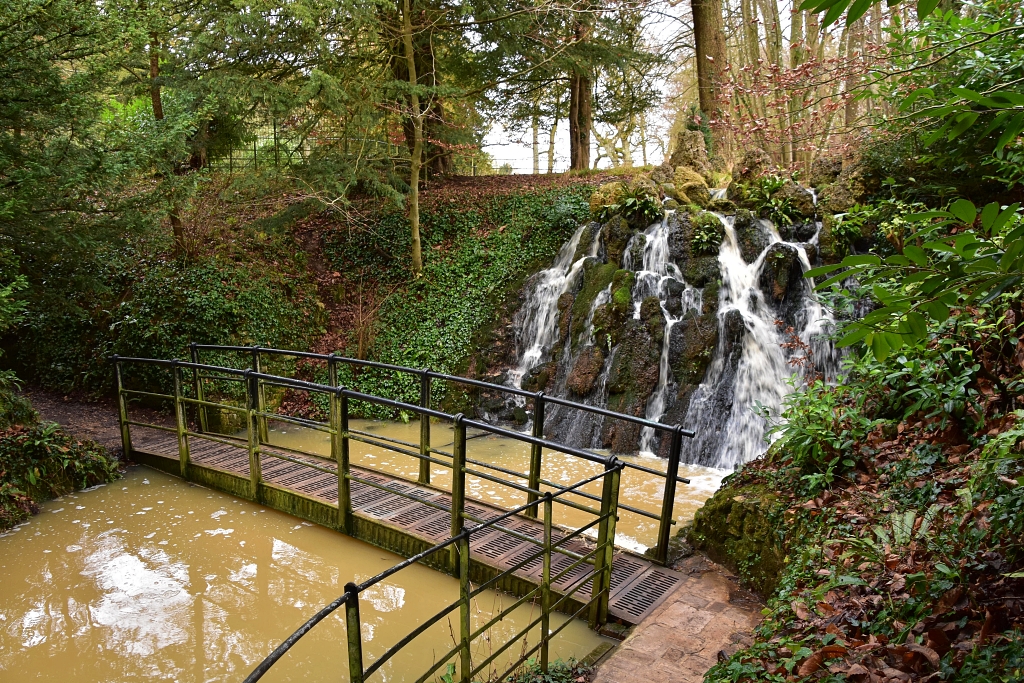 The Brown's Cascade © essentially-england.com
The Brown's Cascade © essentially-england.comJust after the cascade is another gate in a stone wall. I particularly liked all the mossy stones and trees as you enter this garden. There were lots of nooks and crannies to explore, including wonderful trees and ponds.
If - like us - you take a couple of days to find all the monuments of Stowe Gardens, then why not make a short break of it? Look for local accommodation using our Booking.com search box.
Other Stowe pages include:
The Temple of British Worthies
The Circle of the Dancing Faun
For more England days out return from our Stowe Gardens page to the Things to do in England page.
